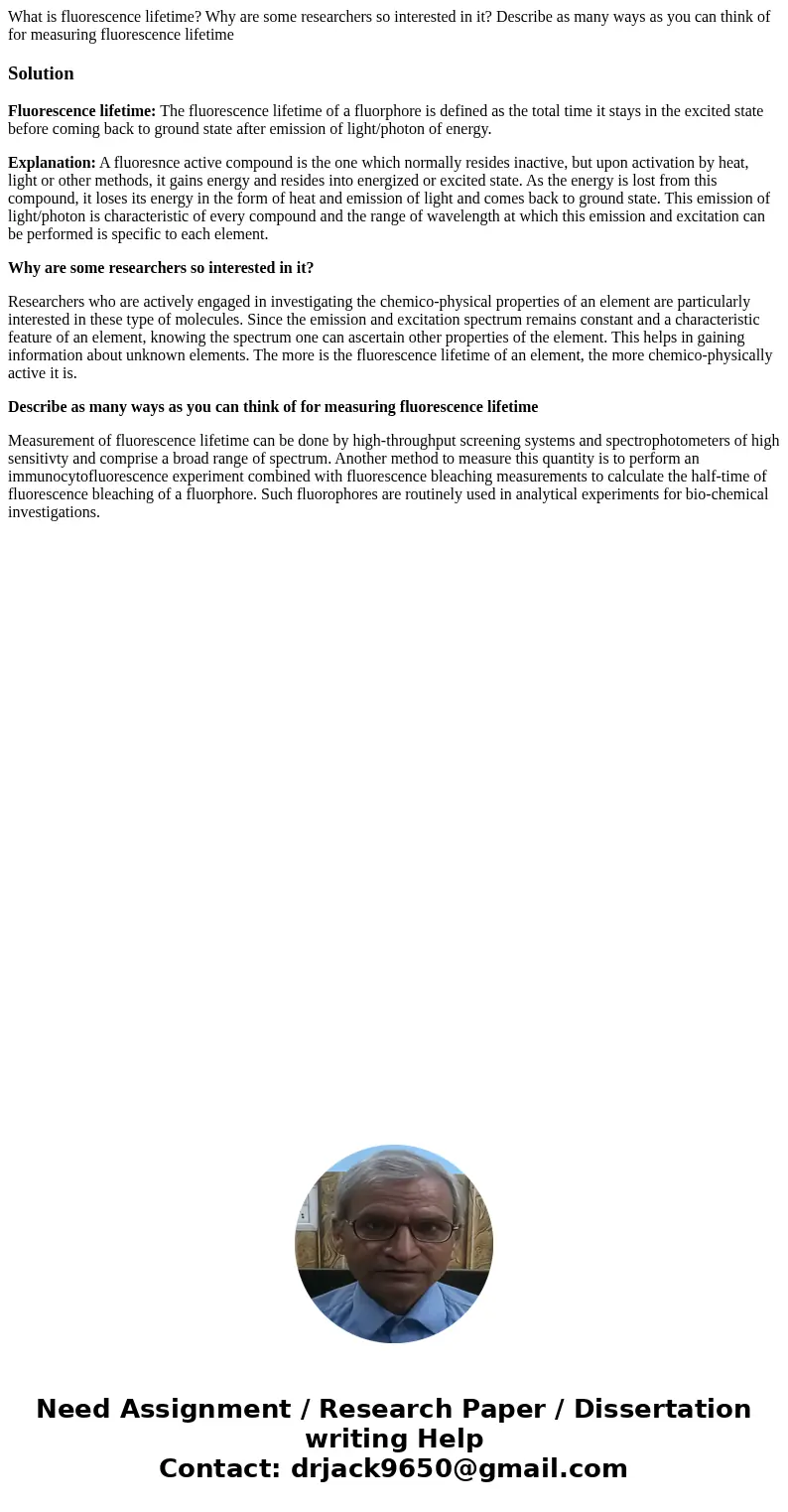What is fluorescence lifetime Why are some researchers so in
What is fluorescence lifetime? Why are some researchers so interested in it? Describe as many ways as you can think of for measuring fluorescence lifetime
Solution
Fluorescence lifetime: The fluorescence lifetime of a fluorphore is defined as the total time it stays in the excited state before coming back to ground state after emission of light/photon of energy.
Explanation: A fluoresnce active compound is the one which normally resides inactive, but upon activation by heat, light or other methods, it gains energy and resides into energized or excited state. As the energy is lost from this compound, it loses its energy in the form of heat and emission of light and comes back to ground state. This emission of light/photon is characteristic of every compound and the range of wavelength at which this emission and excitation can be performed is specific to each element.
Why are some researchers so interested in it?
Researchers who are actively engaged in investigating the chemico-physical properties of an element are particularly interested in these type of molecules. Since the emission and excitation spectrum remains constant and a characteristic feature of an element, knowing the spectrum one can ascertain other properties of the element. This helps in gaining information about unknown elements. The more is the fluorescence lifetime of an element, the more chemico-physically active it is.
Describe as many ways as you can think of for measuring fluorescence lifetime
Measurement of fluorescence lifetime can be done by high-throughput screening systems and spectrophotometers of high sensitivty and comprise a broad range of spectrum. Another method to measure this quantity is to perform an immunocytofluorescence experiment combined with fluorescence bleaching measurements to calculate the half-time of fluorescence bleaching of a fluorphore. Such fluorophores are routinely used in analytical experiments for bio-chemical investigations.

 Homework Sourse
Homework Sourse